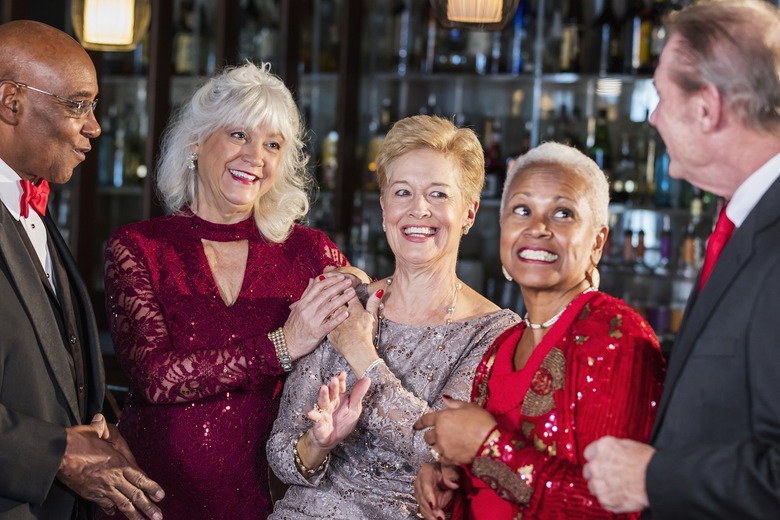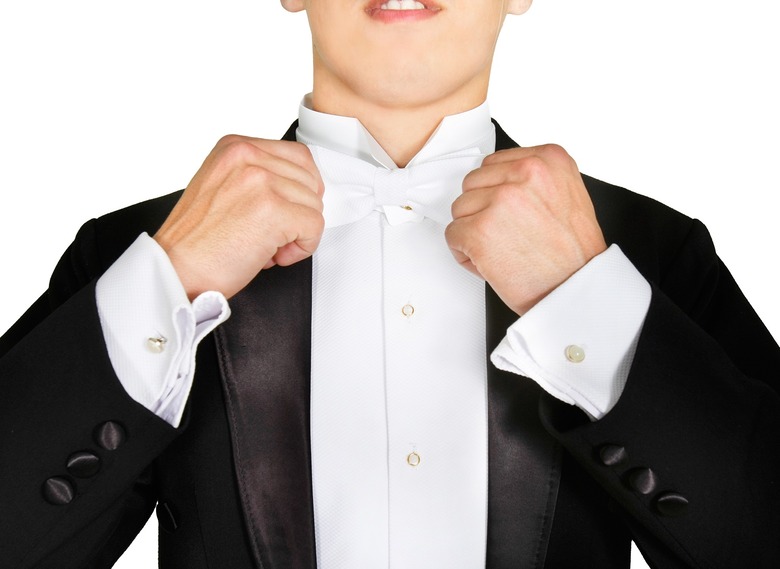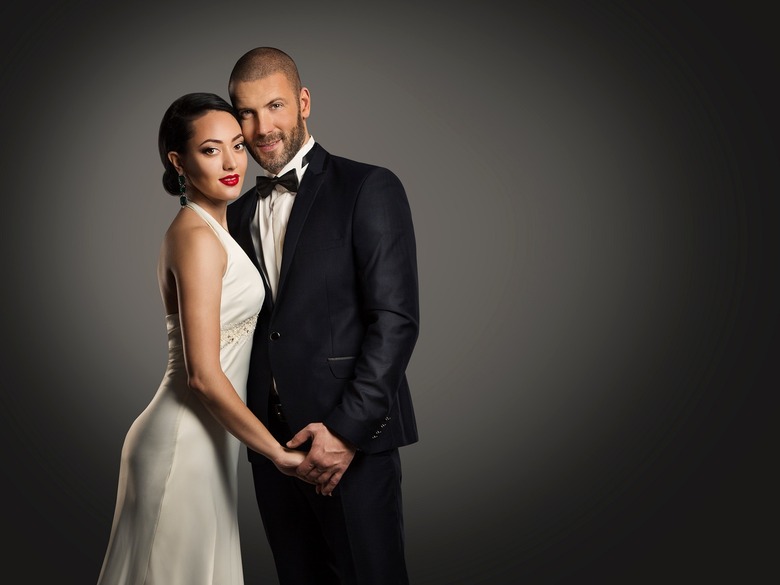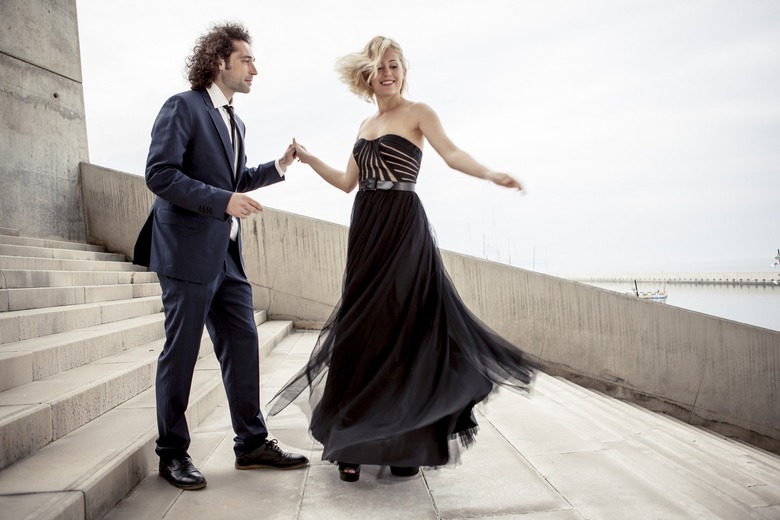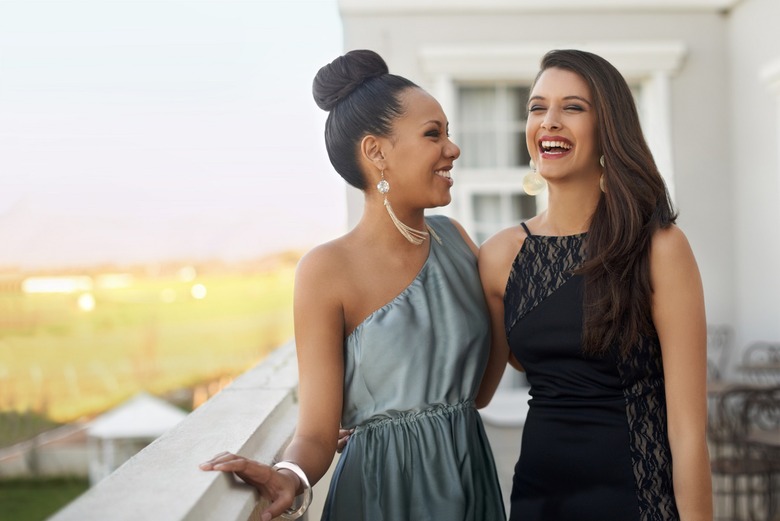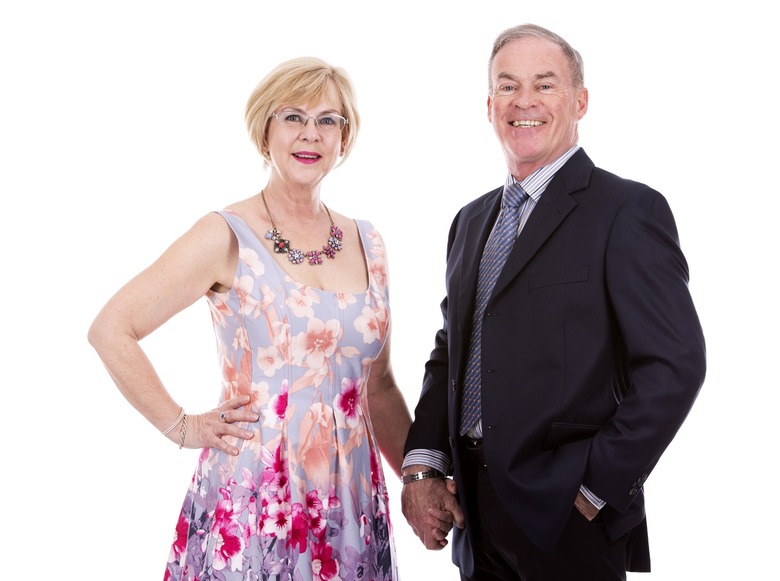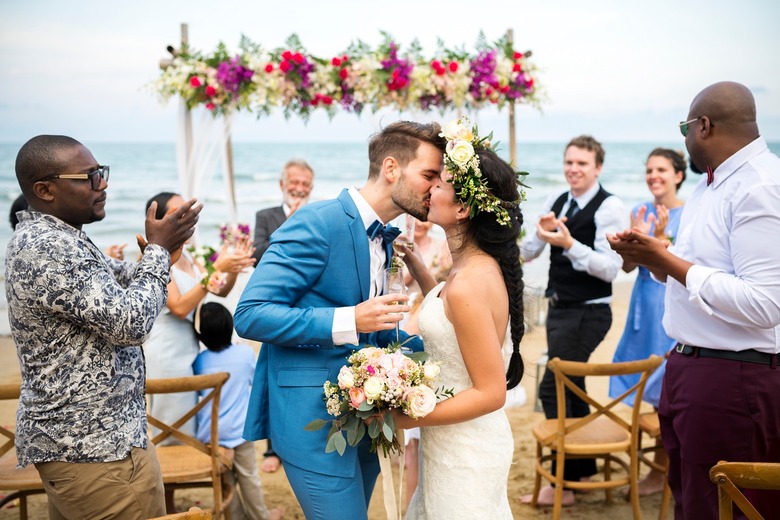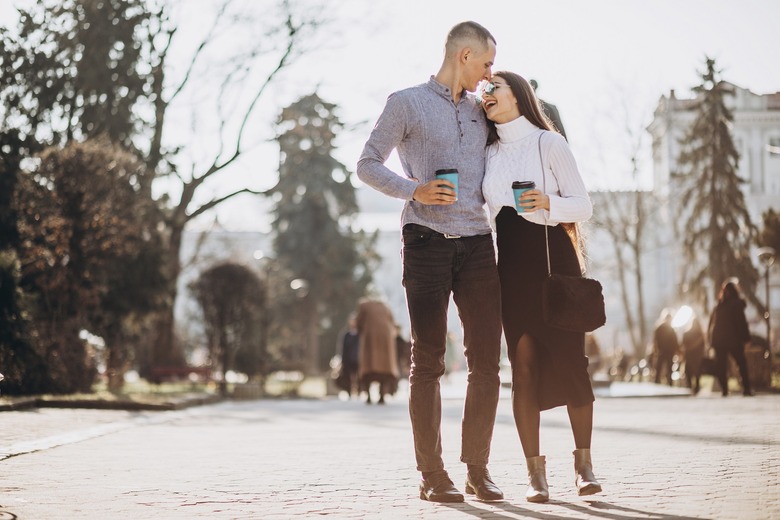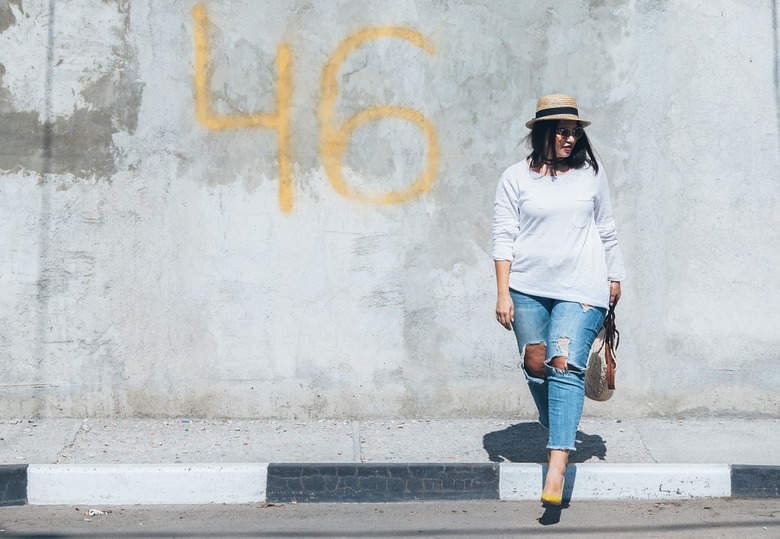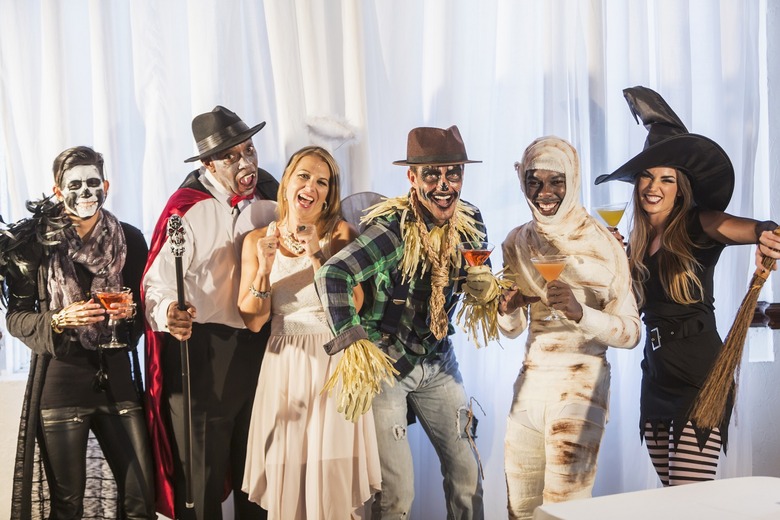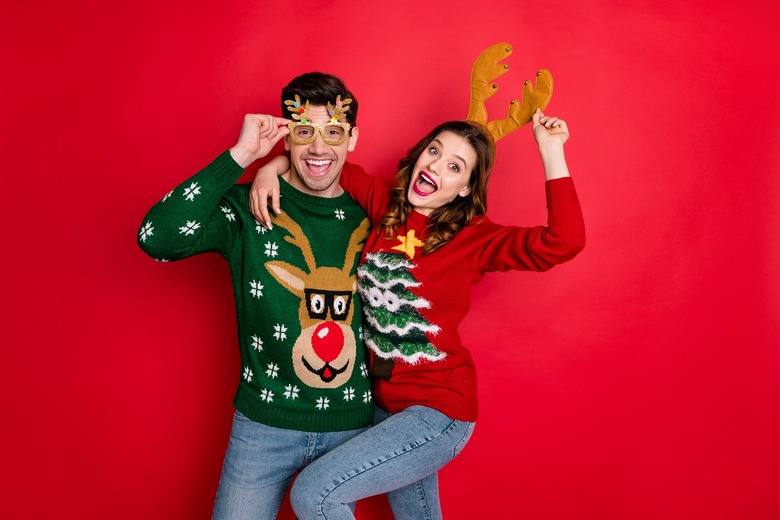Dress Codes Dissected: From Casual To Business To Black Tie
One of the old-fashioned rules of etiquette we need to bring back is following the dress code specified on an invitation. Sure, you know that formal dress means you shouldn't show up in frayed shorts and your grungiest T-shirt, but what should you wear? To figure out what in the world is the difference between black tie and black tie optional as well as the exact definitions of business casual, cocktail dress, white tie and more, we looked to the etiquette experts at Emily Post, Debrett's and The New York Times to finally decode those sneaky dress code definitions.
White tie
The absolute most formal form of dress, white tie is typically reserved for the fanciest occasions and places where you're likely to spot the rich and famous — think the Met Gala, the Oscars or a state dinner. It's not especially common today. For women, this means wearing a floor-length, fitted and fashionable gown with high heels and your finest jewelry. Gloves may be worn for the absolute most formal events. For men, the rules are far more strict. They are required to wear a black coat with tails with matching pants, a white pique vest, a white formal shirt with a white pique bow tie and black patent leather shoes. Cufflinks, shirt studs and gloves for men are also recommended.
Black tie
The second fanciest form of dress, black tie is typically reserved for formal dinners, elaborate weddings and balls. Women should wear long gowns or a formal, fitted cocktail gown that falls below the knees. Recommended fabrics for women include silk, crepe or chiffon, and an evening bag and fine jewelry are also a part of the dress code. Men should wear a black tuxedo with a formal white shirt, black bow tie, black vest or cummerbund, black socks and black leather shoes. Today, of course, men also have the option to embrace creative black tie with trendier formal shirts, accessories and shoes. Sticking strictly to black only for black tie is one of those outdated fashion rules you no longer have to follow.
Formal
While there are many ways that wedding etiquette has changed, one thing that remains is that formalwear, also known as black tie optional, is one of the more common dress codes for evening weddings. Less structured than black tie and white tie, formal means a tuxedo is recommended for men, but wearing a dark suit with a structured dress shirt, tie and dress shoes is perfectly fine. For women, a long evening gown, stylish yet conservative cocktail dress or structured pantsuit are all acceptable options.
Semi-formal
Just a hair below formal, semi-formal no longer means that men are recommended to wear a tuxedo and women are no longer recommended to wear a long, formal gown. For men, a dark suit with a conservative tie, dress shirt and dress shoes are expected. Women can wear cocktail dresses, fashionable separates or a suit.
Cocktail
One of the more common dress codes, cocktail attire is also one of the less-defined ones. And no, it doesn't mean dressing like a classic cocktail. For women, a little black dress is a safe bet, but there's room for personality, different cuts and colors. Just stay away from casual fabrics such as cotton. Stylish jumpsuits or pantsuits are also just fine. For men, cocktail dress looks a lot like formal attire, though there is more room for colorful dress shirts and ties or a gray, navy or tan suit in the daytime. This is the kind of attire you might wear to an afternoon wedding or to a classy dinner at one of America's best restaurants.
Beach formal
If you're heading to a wedding at one of the best beaches in the world, the invite may read "beach formal." This means that you should still dress to impress but also need to consider your surroundings, which are bound to be hot, windy and sandy. For women, a summery, long dress with wedge heels and costume jewelry is acceptable. For men, a standard suit would be far too warm to wear on a hot summer day. Instead, opt for a dress shirt with a linen jacket and khakis. Just be sure to avoid swimsuits and flip-flops until the after-party.
Business formal
One of the etiquette mistakes you need to stop making is underdressing for work. If you work in an old-fashioned office, have a job interview or are networking, consider a business formal dress code. For men, business formal means a black, gray or navy suit with a dress shirt, tie, dress socks and dress shoes. Women should wear suits, dress shirts with knee-length skirts, or a business dress and dress shoes.
Business casual
Many offices today follow a business casual dress code. For women, this means wearing a casual dress, or dress pants or a mid-length skirt with a dress shirt, sweater or knit shirt. T-shirts and spaghetti-strap tank tops are best avoided. For men, business casual means khakis or dress pants with a dress shirt, button-down shirt or polo. Just be sure you're following your office's particular dress code — not doing so is one of the ways you're being rude at work.
Smart casual
Also known as dressy casual, this is the sort of outfit you would wear on a first date to a great casual restaurant, to a nice party or for a night out on the town. Women, feel free to play around with fashion and wear a dress, skirt with a cute and trendy top or even nice dark-wash jeans with a snazzy shirt that makes you feel fun and fashionable. Men, smart casual also means dark-wash jeans, khakis or dress pants with a button-down shirt or polo. Everyone should avoid sneakers and shorts.
Casual
For the most part, casual dress means to come as you are, though it can vary by occasion. For instance, if you're going to a second wedding with a casual dress code, women should consider a cotton sundress and men should consider khakis with a polo shirt. But if you're going to a party at a friend's house like a housewarming or a wedding shower, then jeans, a clean (and appropriate) T-shirt, a casual skirt, sandals or sneakers are all fine. Arriving at a party severely underdressed is one of those behaviors you may not realize are rude, so check in with your host if you're unsure what their definition of casual means.
Costume
Whether you're going trick-or-treating with family at Halloween or going to a themed party, costume attire means to get creative and dress as Wonder Woman, a creepy clown or your favorite '80s pop star. Be sure to participate if this is the dress code and also try to avoid costumes that might offend others.
Festive
Festive attire is something you'll see pop up during the holidays. It means to dress for the season, in holiday colors and with costume jewelry, themed accessories and other seasonal garb. Depending on the formality of the occasion, a festive dress code could mean cocktail dresses with sparkly snowflake earrings or ugly sweaters and Santa hats. Be sure to check in with your host if they designate this as the attire. After all, that's one of the secrets to being the best party guest ever.
More from The Daily Meal:
19 Ways You Didn't Know You Were Being Rude
All Your Modern Etiquette Questions, Answered
15 Manners Every Child Should Learn
